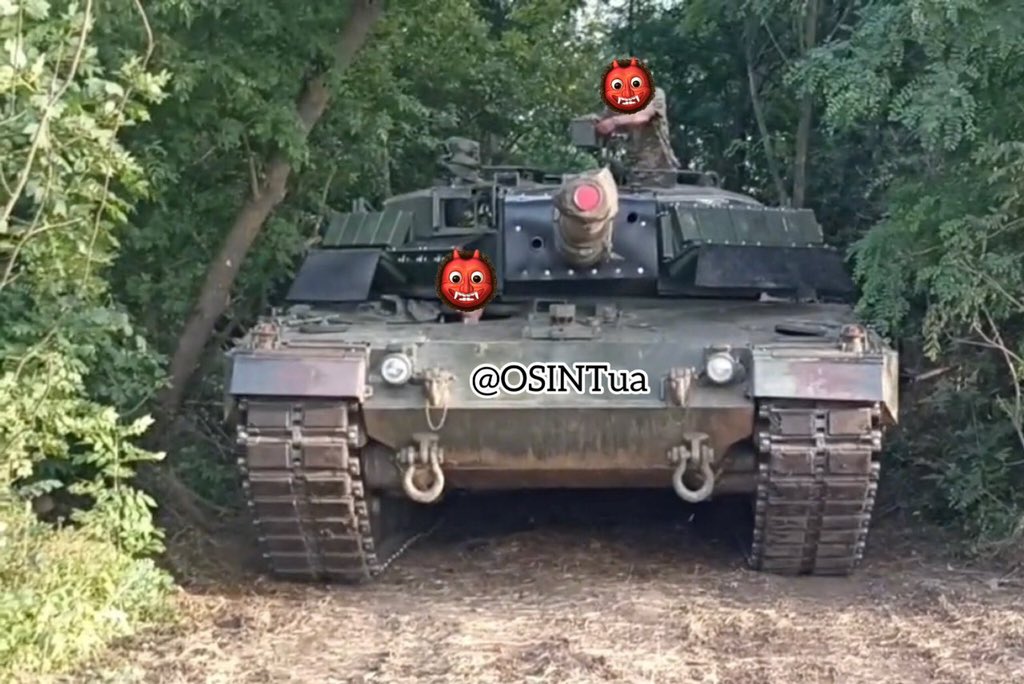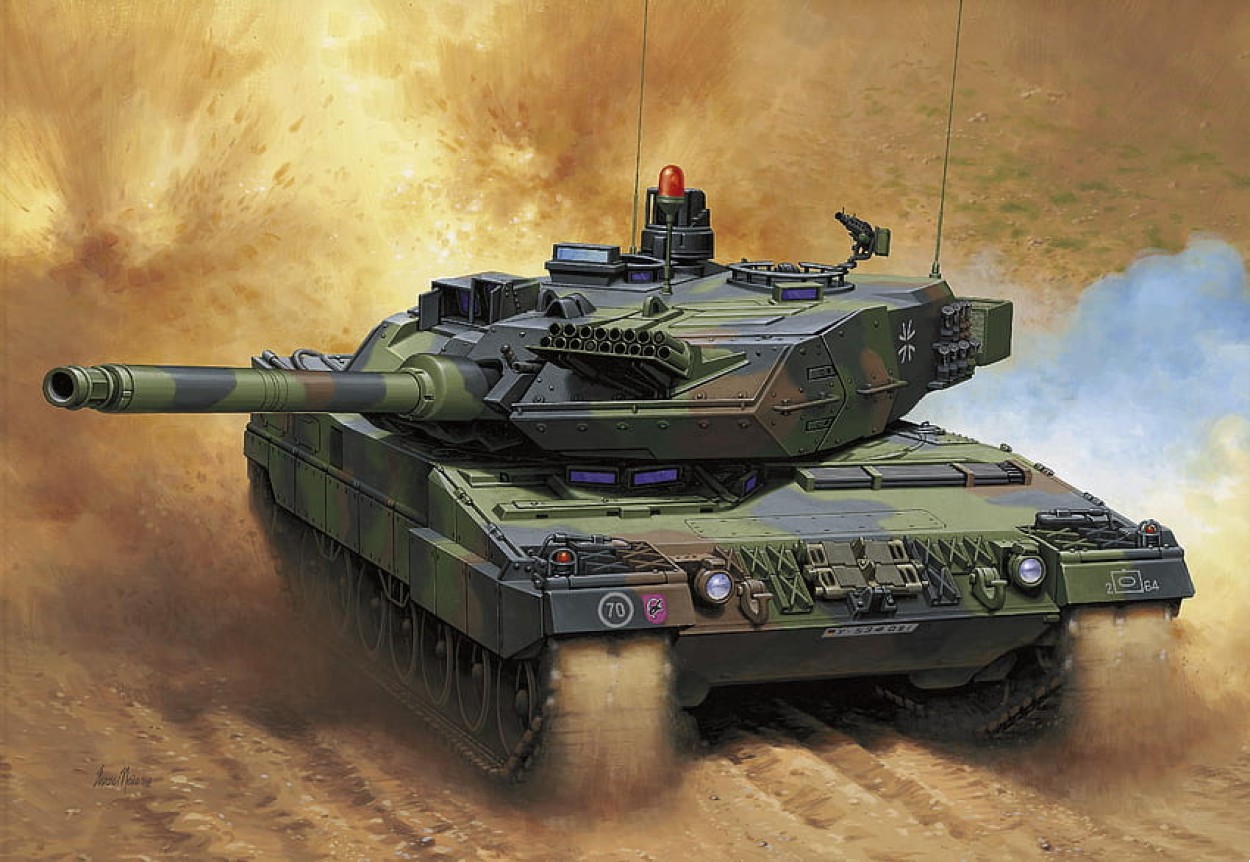In a move to counter the increasing vulnerability of Western tanks deployed in Ukraine, Kyiv authorities are equipping them with additional explosive reactive armor of Soviet-era origin to bolster their survival prospects in the ongoing conflict.
“Poorest” Air Force With ‘Most Powerful’ Fighters: Troubled IAF Plans To Fly F-15EX, Rafale, F-16, Su-30MK2, F-16 & KF-21
The general director of the Rostec state corporation has claimed that Russian anti-tank missile systems (ATGMs) are effectively eliminating Western tanks deployed in Ukraine.
During a conversation with RIA Novosti, Sergei Chemezov, the CEO of the Rostec state corporation, said the “Chrysanthemum” and “Kornet” Anti-Tank Guided Missile (ATGM) systems can penetrate the German Leopard tank from any direction.
“They burn very well. Our Kornet or Chrysanthemum ATGMs penetrate the same Leopard from any side,” he said.
Furthermore, Chemezov said that Western tanks have started incorporating additional Soviet-era explosive reactive armor to enhance their chances of survival in combat situations.

In broad terms, Explosive Reactive Armor (ERA) is designed as a defensive measure against penetrating anti-tank munitions such as high-explosive anti-tank (HEAT) and armor-piercing rounds. ERA operates by detonating upon impact just before the incoming round reaches the tank’s hull.
This preemptive detonation generates a counter-blast effect that aims to disrupt the effectiveness of the incoming weapon or, in some cases, destroy it outright. The goal is to mitigate the damage caused by anti-tank munitions and enhance the overall survivability of the armored vehicle.
Russian forces have been using the Chrysanthemum Anti-Tank Guided Missile (ATGM) in Ukraine, claiming that this weapon system has successfully destroyed a considerable number of Ukrainian armored vehicles of different classes and types.
The Chrysanthemum ATGM can launch up to four missiles per minute through automatic loaders. The manufacturer, KBM, asserts that a platoon consisting of three Khrizantema-Ss can potentially disable a company of 14 tanks within two minutes, assuming an estimated 60% kill probability per shot.
Similarly, the Kornet ATGM system has also been credited with destroying several Ukrainian vehicles, showcasing its effectiveness in the ongoing conflict.
Explosive reactive armor of Soviet-era origin was first observed on Western tanks in July 2023, with images depicting Ukrainian Leopard 2s equipped with an outer layer of Soviet-era ERA bricks.
The addition of ERA on Western tanks has the potential to enhance defense against widespread threats such as anti-tank guided missiles and closer-range weapons like rocket-propelled grenades. However, the precise extent of their performance remains uncertain.
Western Tanks Failed In Ukraine?
Western tanks have reportedly not lived up to Ukraine’s expectations, despite the latter labeling them as a potential game-changer for counteroffensive operations.
Mike Mihajlovic, a defense technologies expert and former Canadian Armed Forces officer, told EurAsian Times that the Russian anti-tank guided missiles (ATGMs) exhibit impressive penetration capabilities over long distances.
While the Leopard 2 is a well-armored tank, it is not impervious to hits on both the turret and hull, with a notable drawback being its substantial size, making it a relatively vulnerable target in field conditions, Mihajlovic said.
The tank’s full potential can be realized when air superiority exists on a specific battlefield. Ukrainian deployment of their Western-made tanks has been limited since the initial Russian attacks, resulting in significant casualties, with nearly 50% rendered non-operational due to destruction or severe damage.
Mihajlovic pointed out that Western tanks necessitate highly skilled maintenance crews, making it challenging to address minor damages in field conditions without adequate support staff.
“On the contrary, the Russian crews can fix their tanks in the field conditions, and there are well-organized field repair shops for major repairs. Ukrainian repair stations and shops are suited for the field works on all their tanks, but maintaining the Western equipment requires different tooling and re-train of the staff,” he explained.
Mihajlovic concluded, “Even minor damage often requires that the tank be shipped out of the country, which is time and resource-consuming. Regarding maintenance, Abrams is the most demanding.
“For example, even a mild engine (gas turbine) issue can’t be fixed in the field. Challenger 2 is the best protection but is too heavy and unsuitable for ground conditions. Also, after the failure of the Leopards, the Western equipment is withdrawn from the front and hidden in the rear to act in the case of major Russian breakthroughs (you can see a similarity with the Nazi Tiger tank’s role).”
In a similar vein, Vladimir Prokhvatilov, a Russian military expert and senior researcher at the Academy of Military Sciences, also previously elaborated on the limitations of Western tanks in the context of the conflict in Ukraine.
According to Prokhvatilov, Western tanks demand costly and advanced maintenance, which is impractical in the field in Ukraine. Furthermore, these tanks are unsuitable for frontline attacks but function effectively as rapidly relocating firing points.
Prokhvatilov provided specific critiques of Western tanks, citing the Challenger as more akin to a stationary howitzer due to its accurate shooting capability only when stationary.
He acknowledged the Leopard as the most effective among Western tanks in Ukraine, thanks to its robust diesel engine, despite its vulnerability to combustion.

The expert highlighted that Western tanks were initially designed to counter tens of thousands of Soviet vehicles, resulting in their production in smaller numbers with enhanced electronics and better protection.
However, the evolving threat landscape revealed the vulnerability of even the best tanks against loitering ammunition.
Prokhvatilov asserted that Leopard tanks should not be employed on the front lines of an attack. Instead, their role is perceived as that of firing points, swiftly changing locations while collaborating with various types of military forces.
He also brought attention to the vulnerabilities of US-made Abrams tanks, emphasizing that the engines of M1A1 Abrams tanks are susceptible to quick clogging with sand and mud, resulting in failures. Furthermore, he noted their relatively high fuel consumption.
Russian experts and officials have consistently emphasized that Western tanks, including Leopard, Challenger, and Abrams tanks supplied to the Armed Forces of Ukraine (AFU), have not had a decisive impact on the situation on the battlefield.
- Contact the author at ashishmichel(at)gmail.com
- Follow EurAsian Times on Google News




